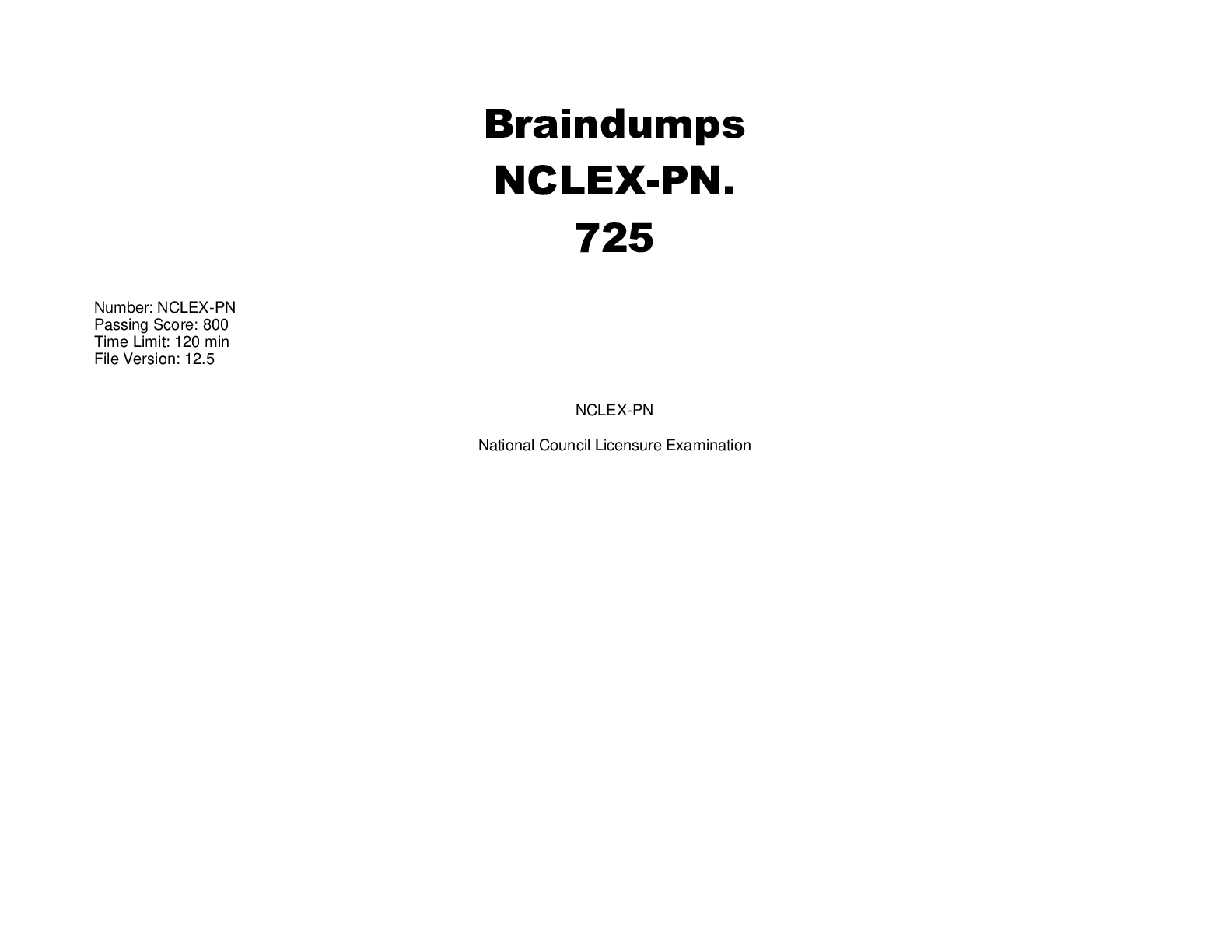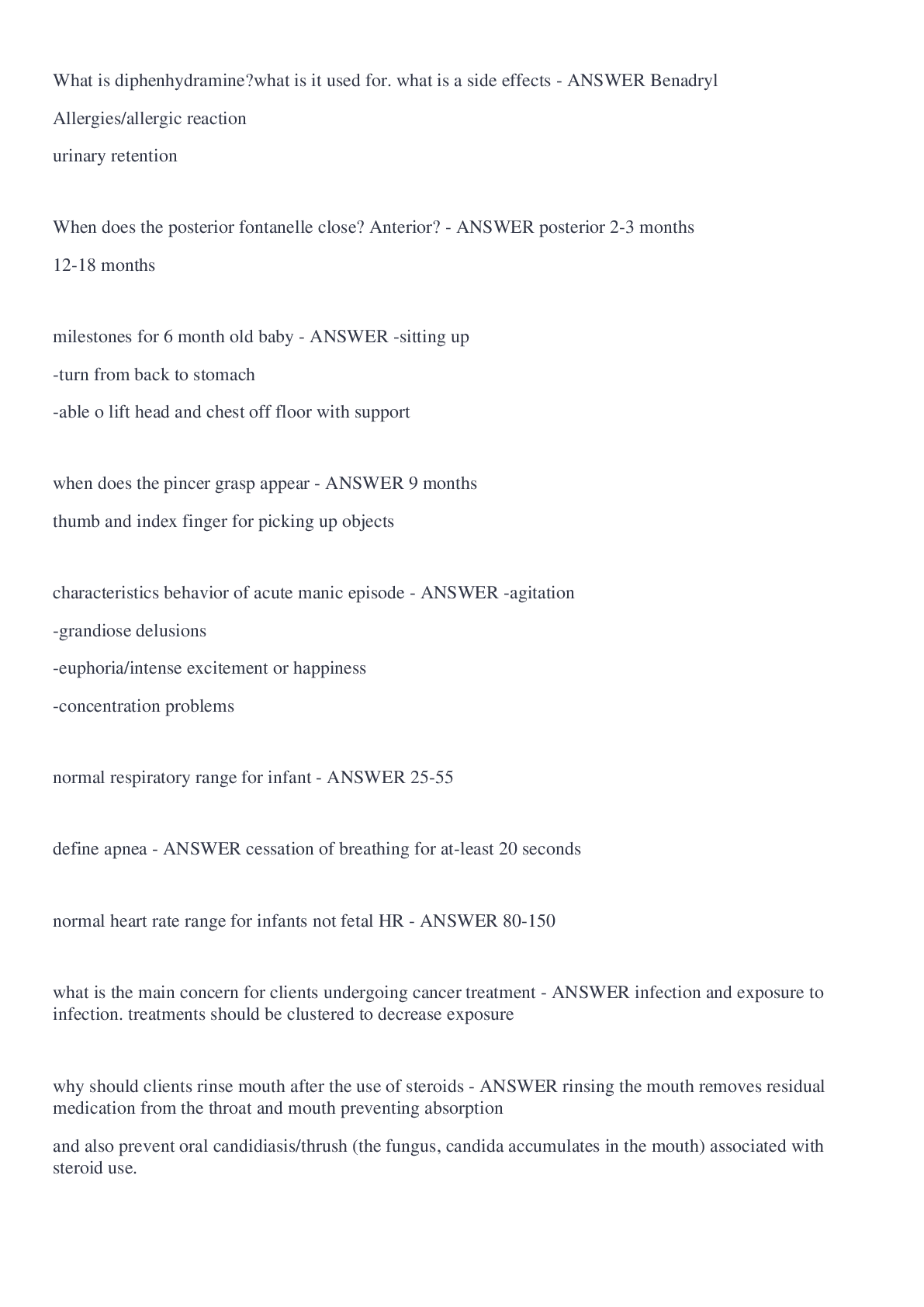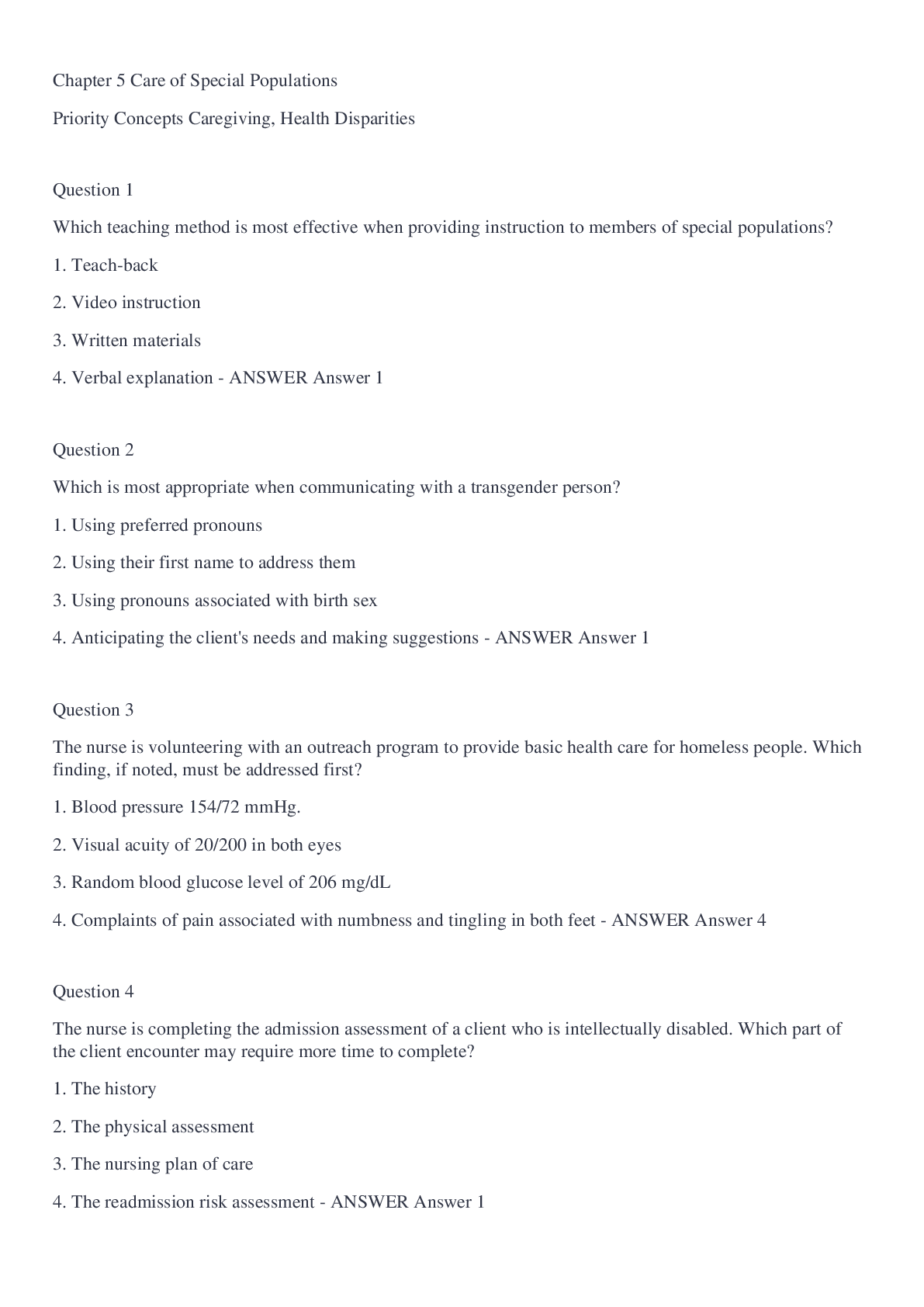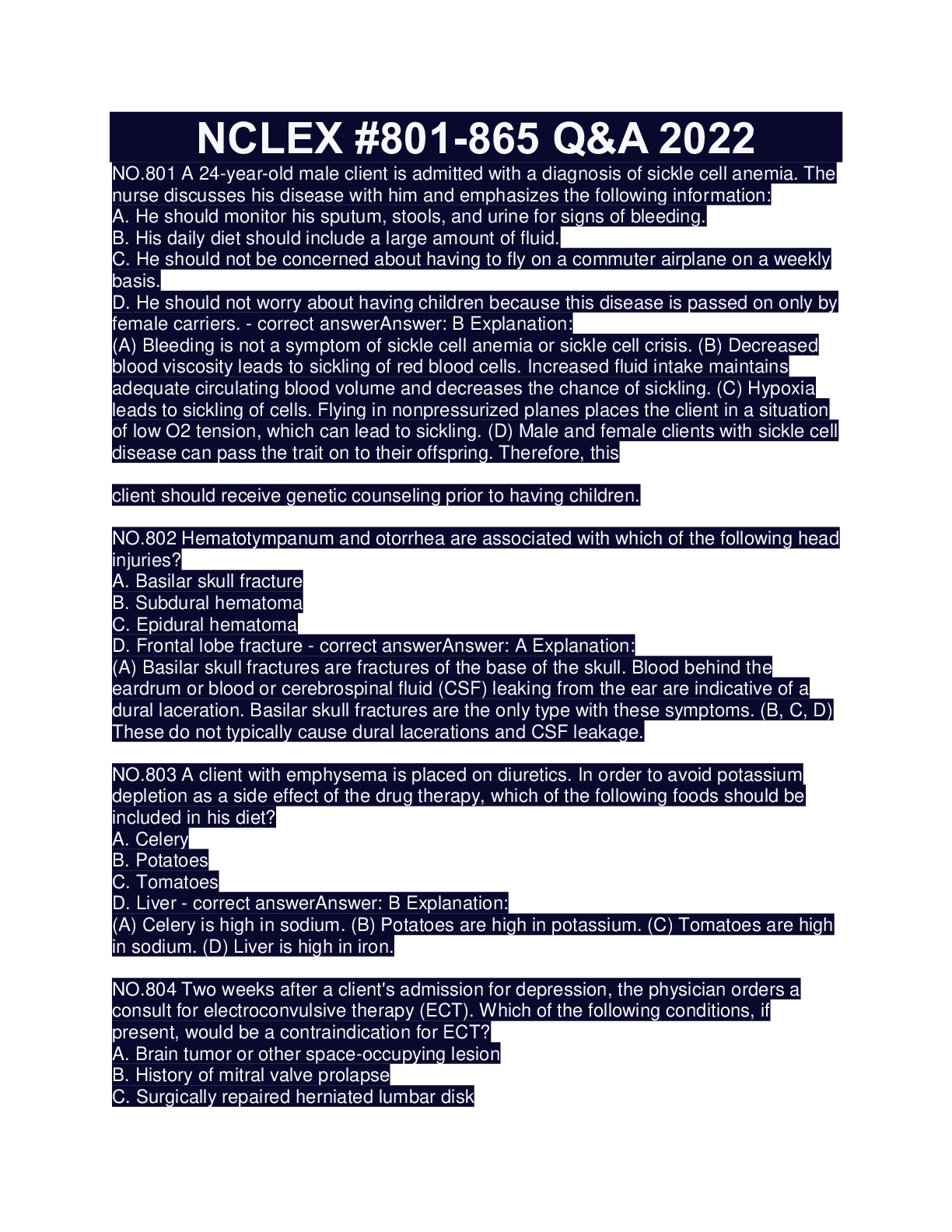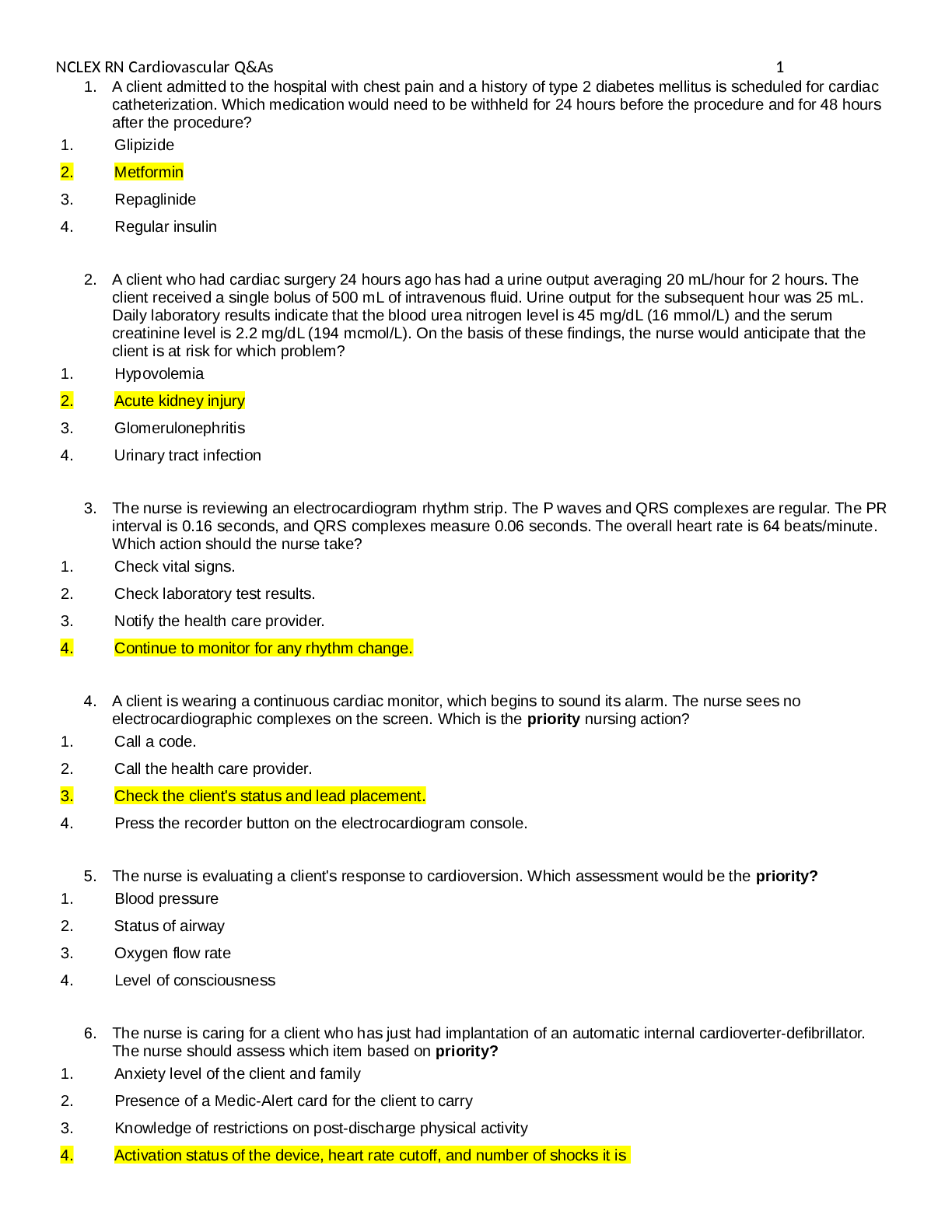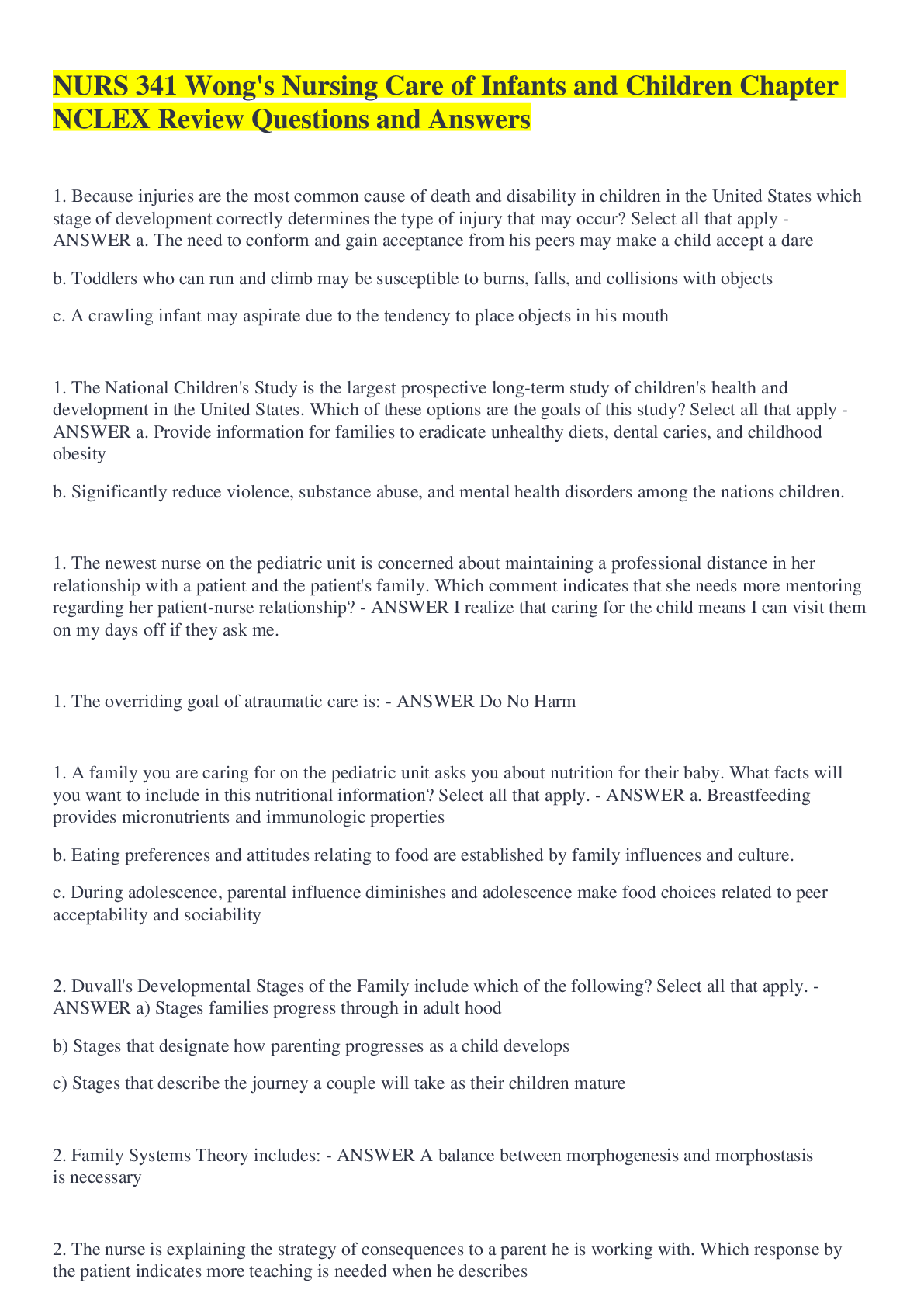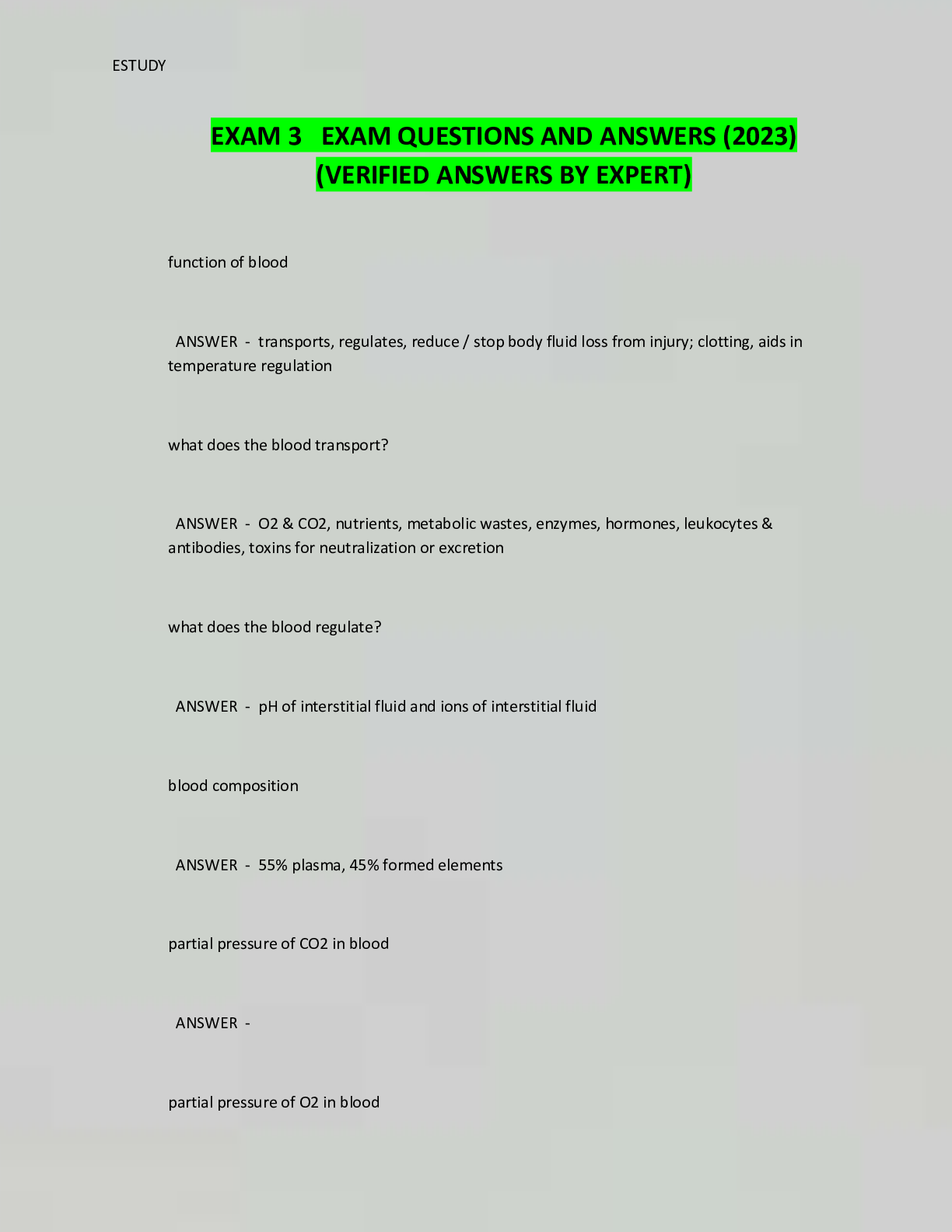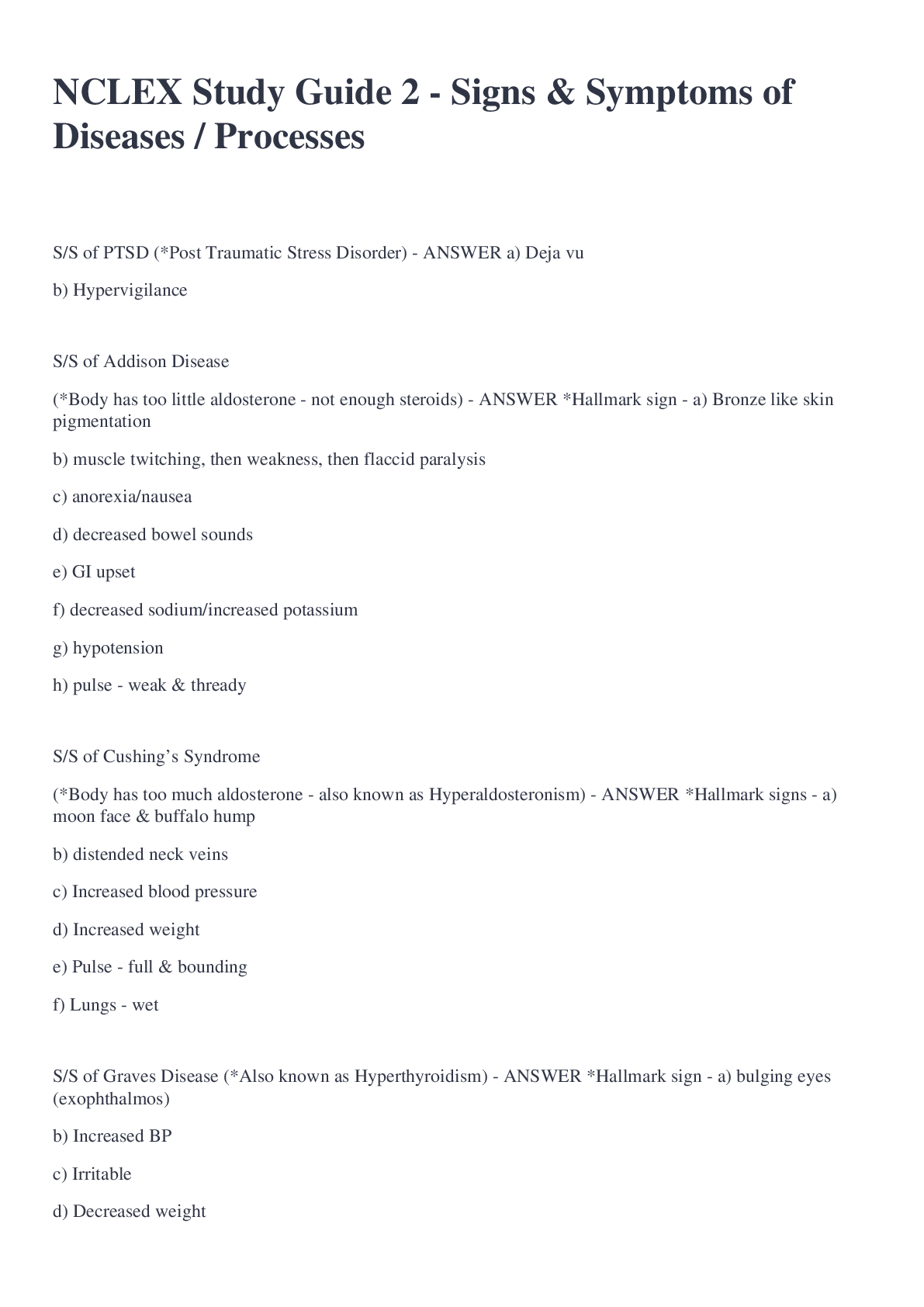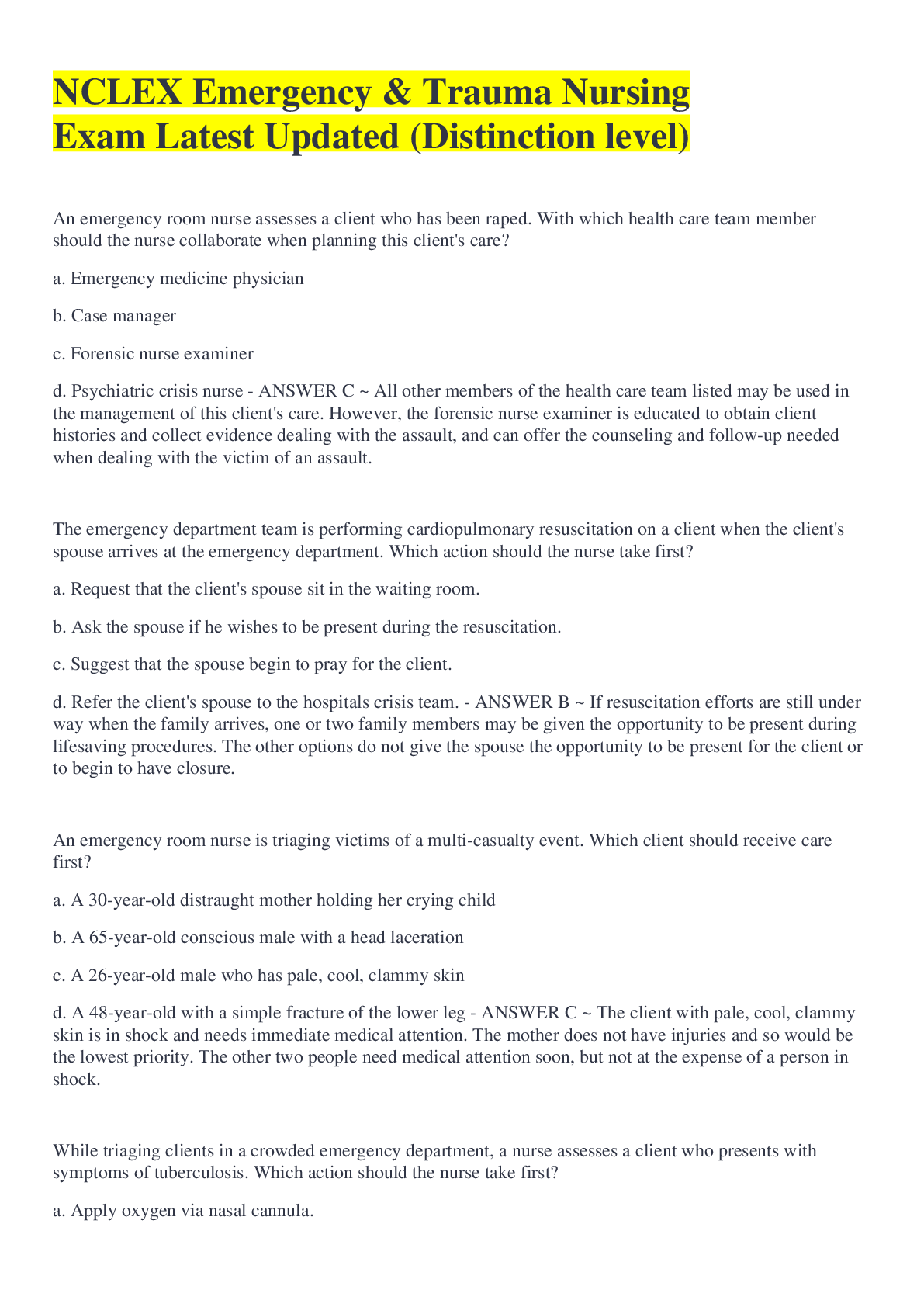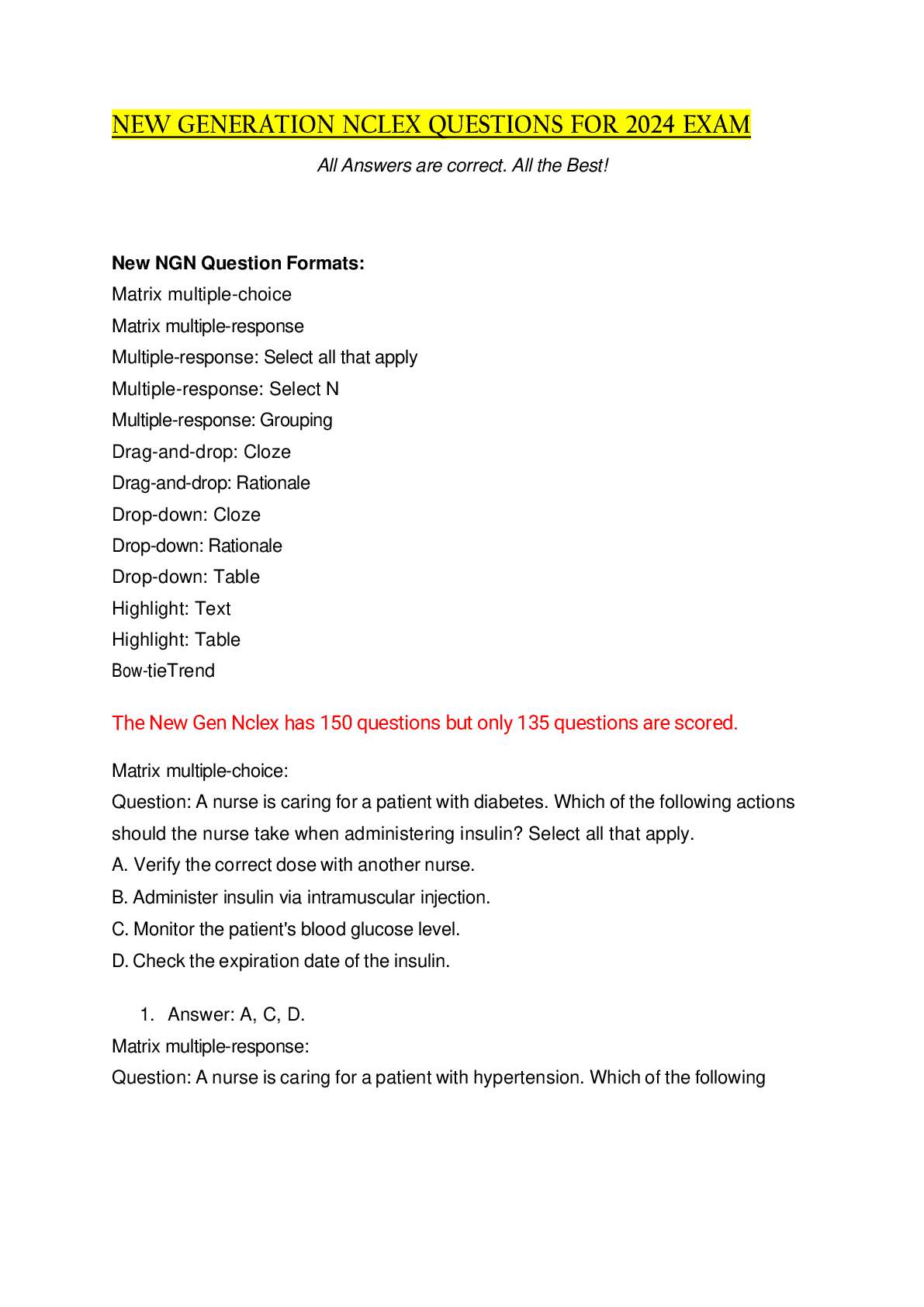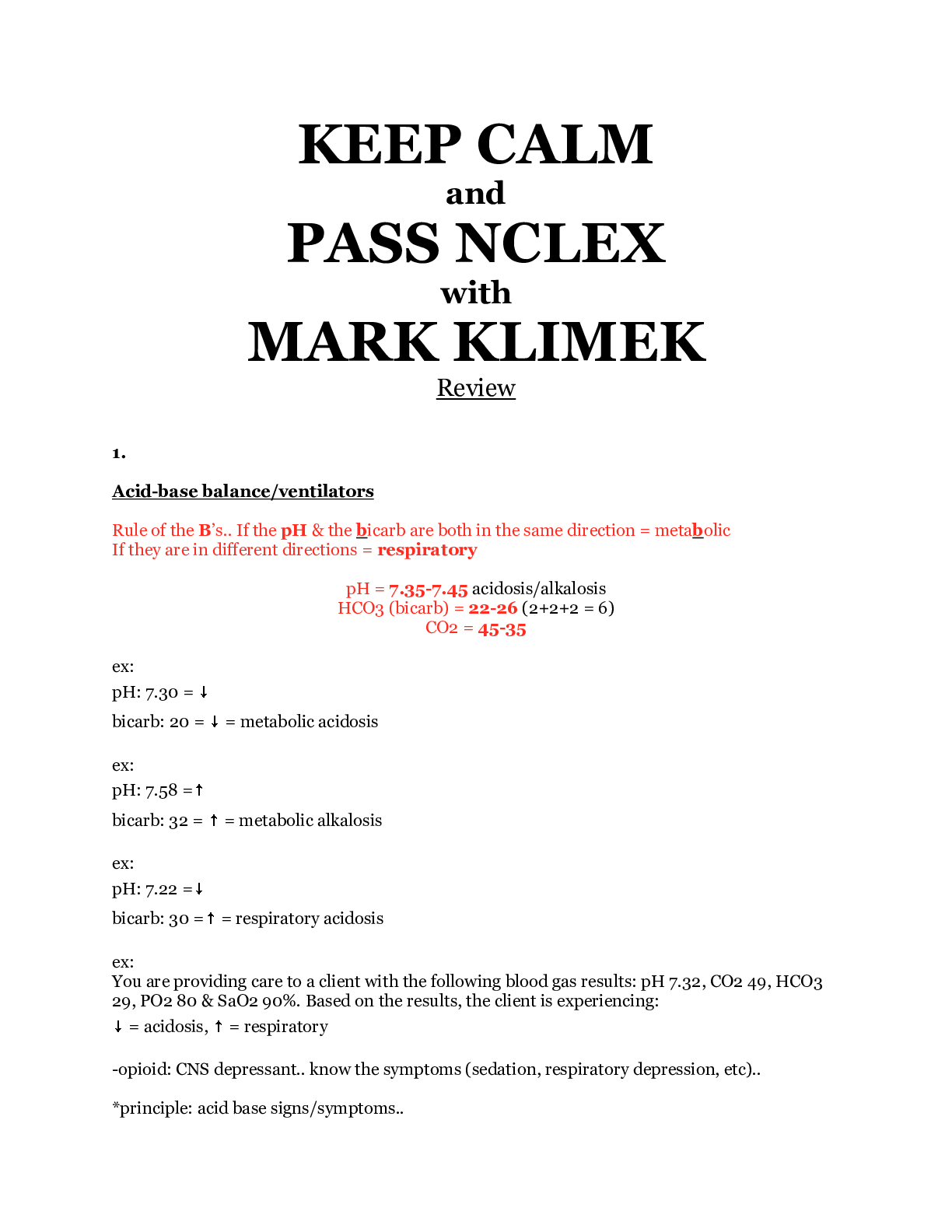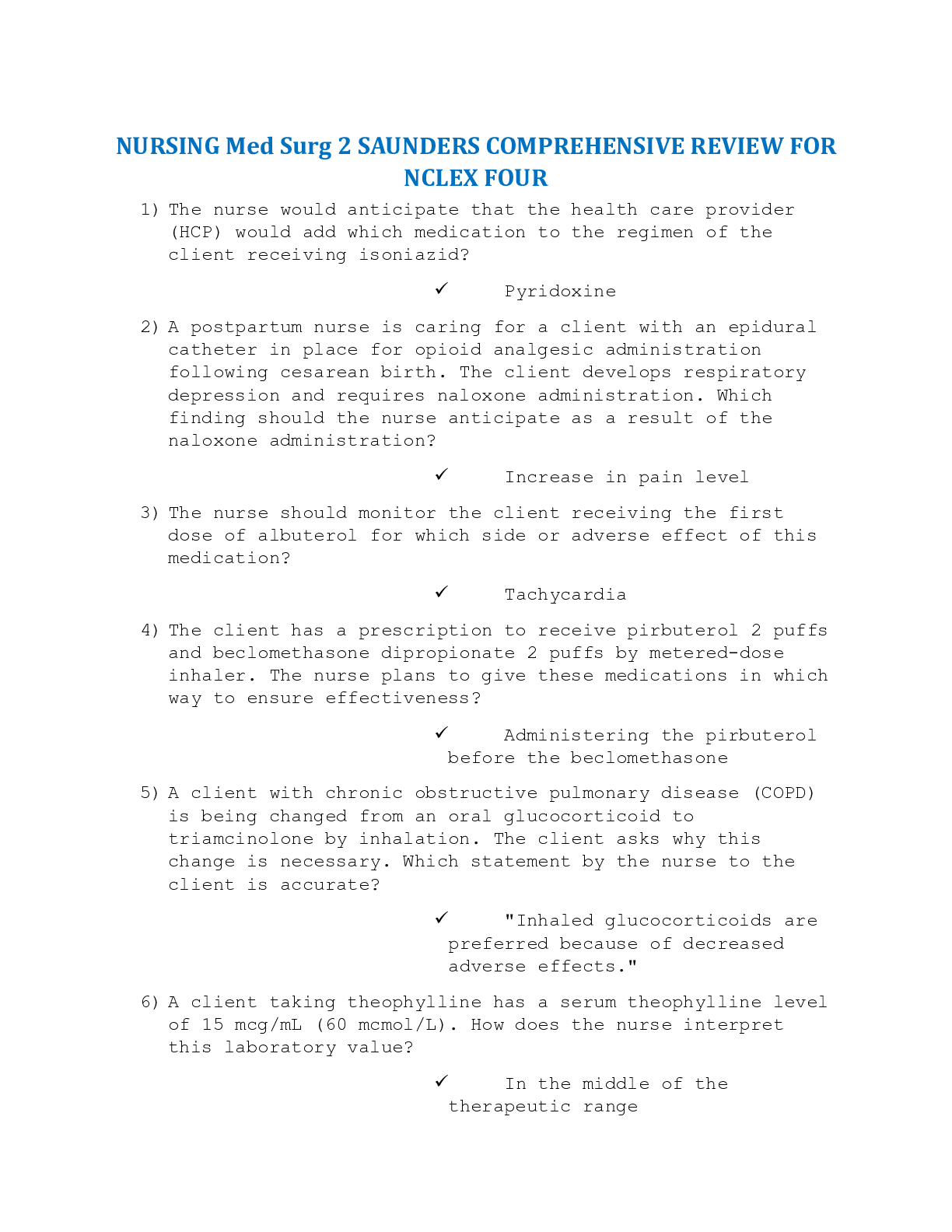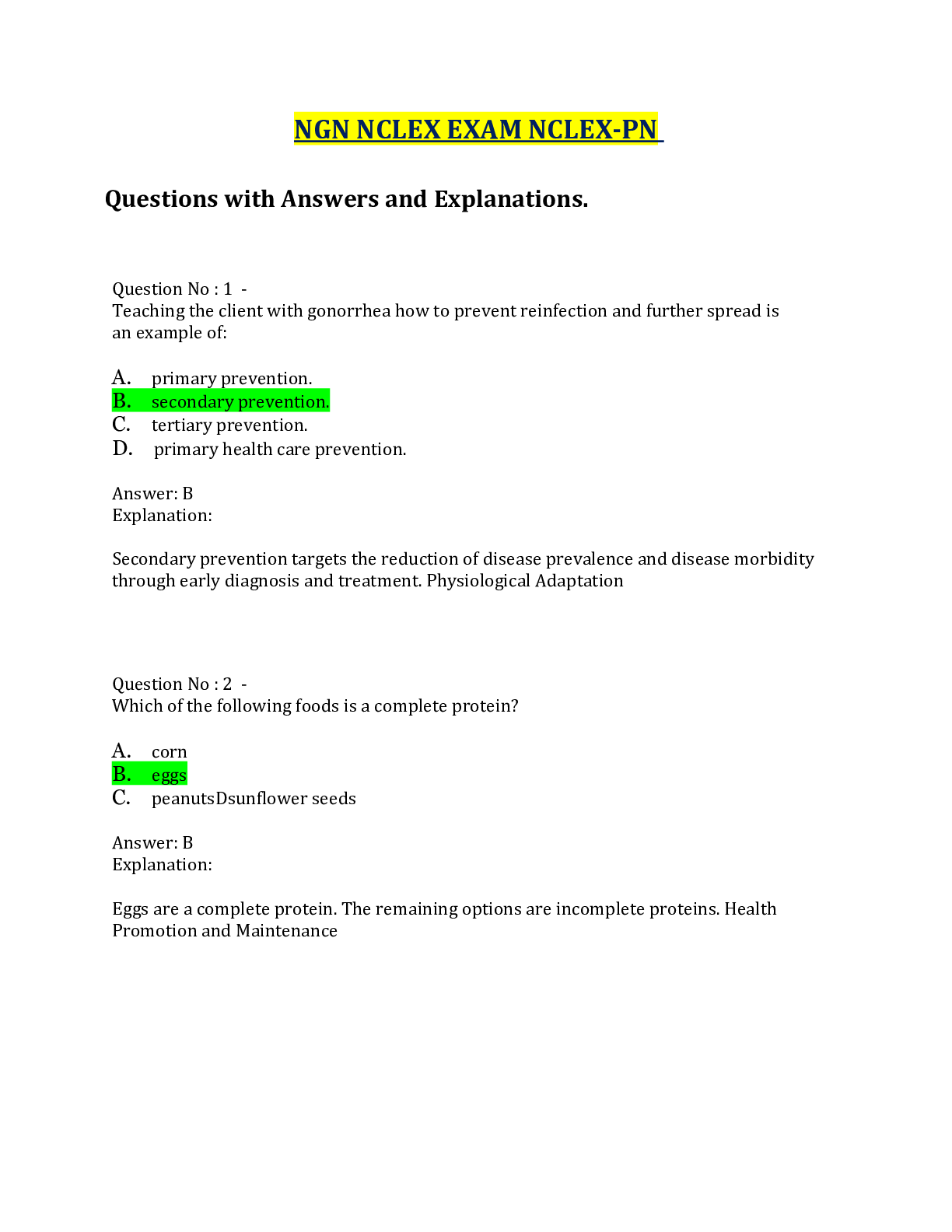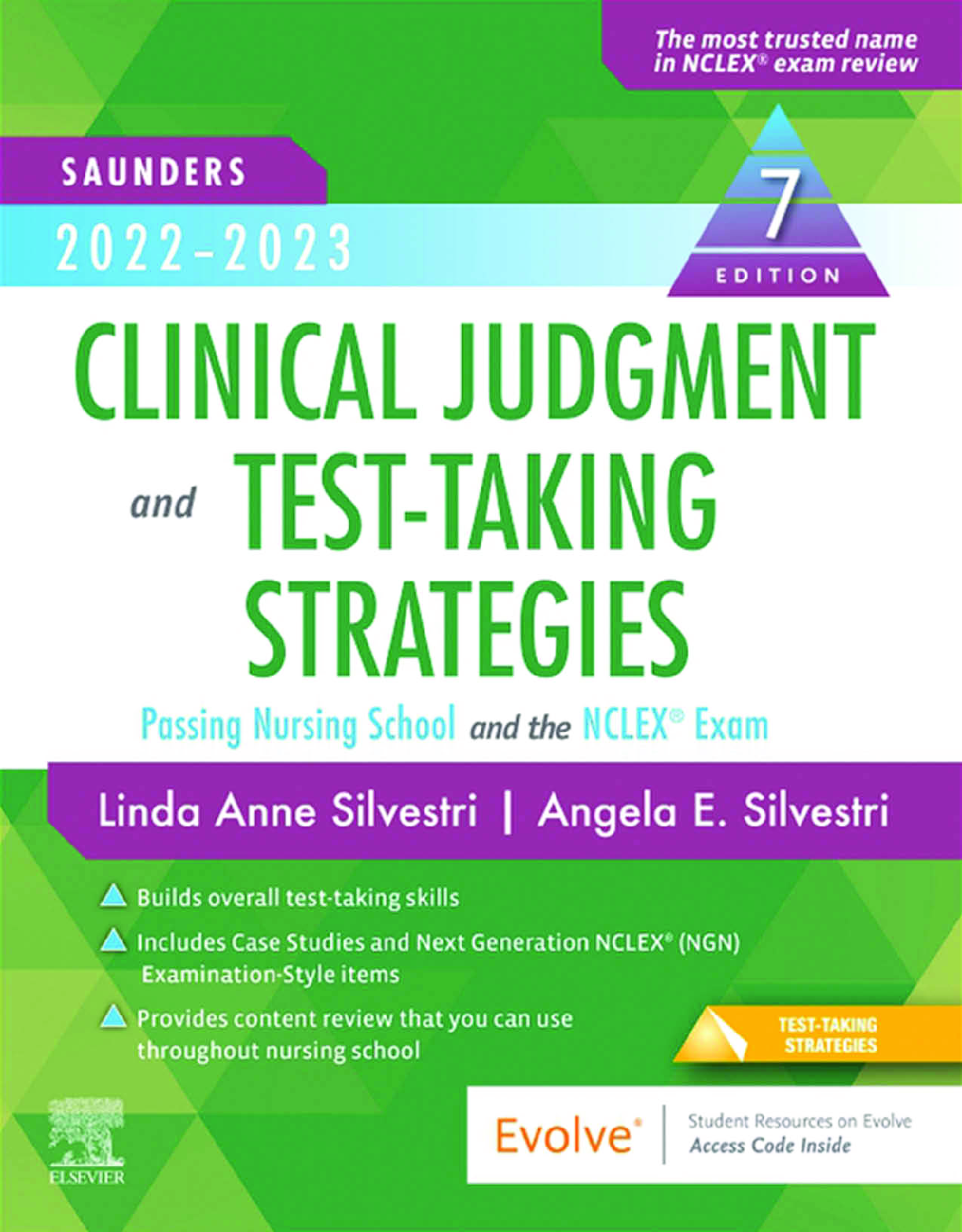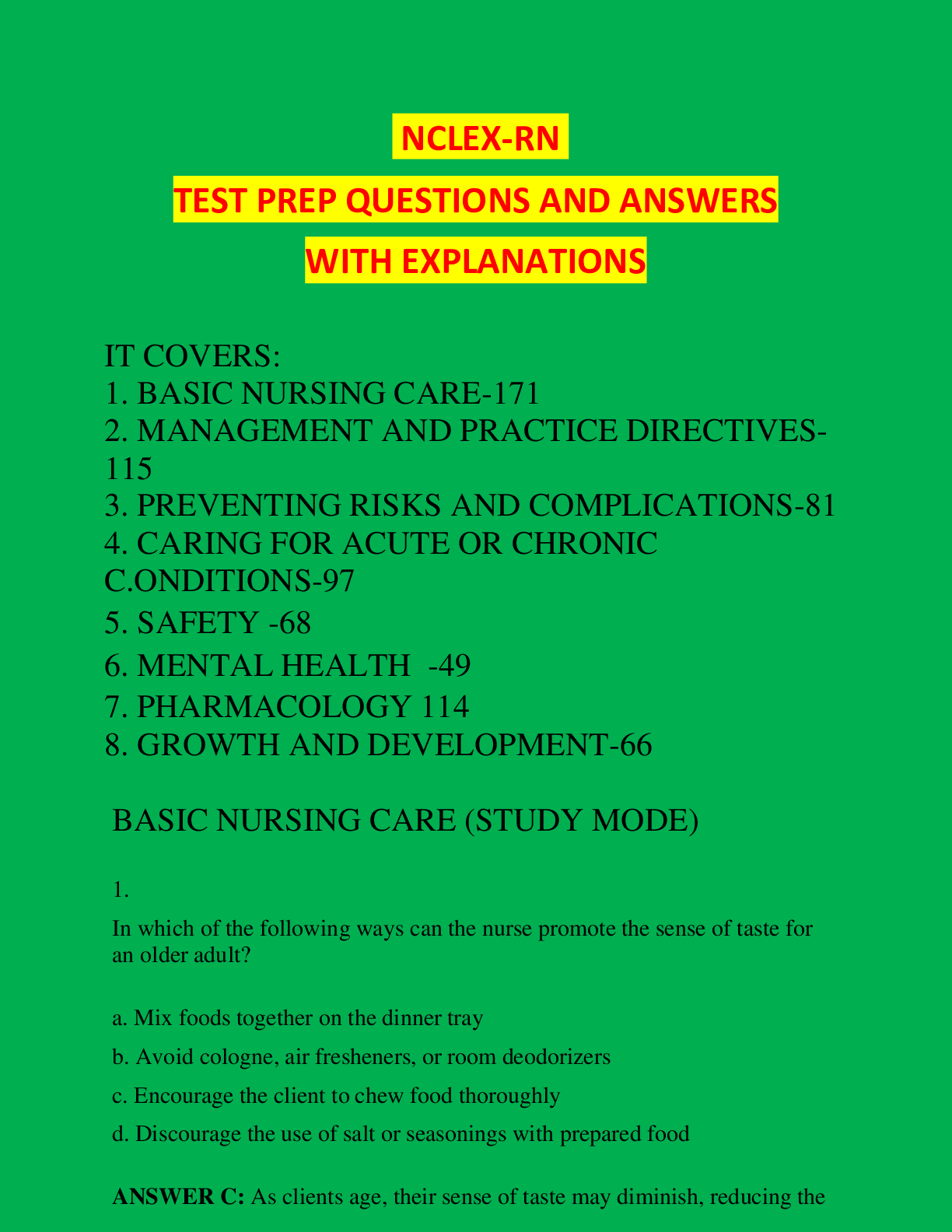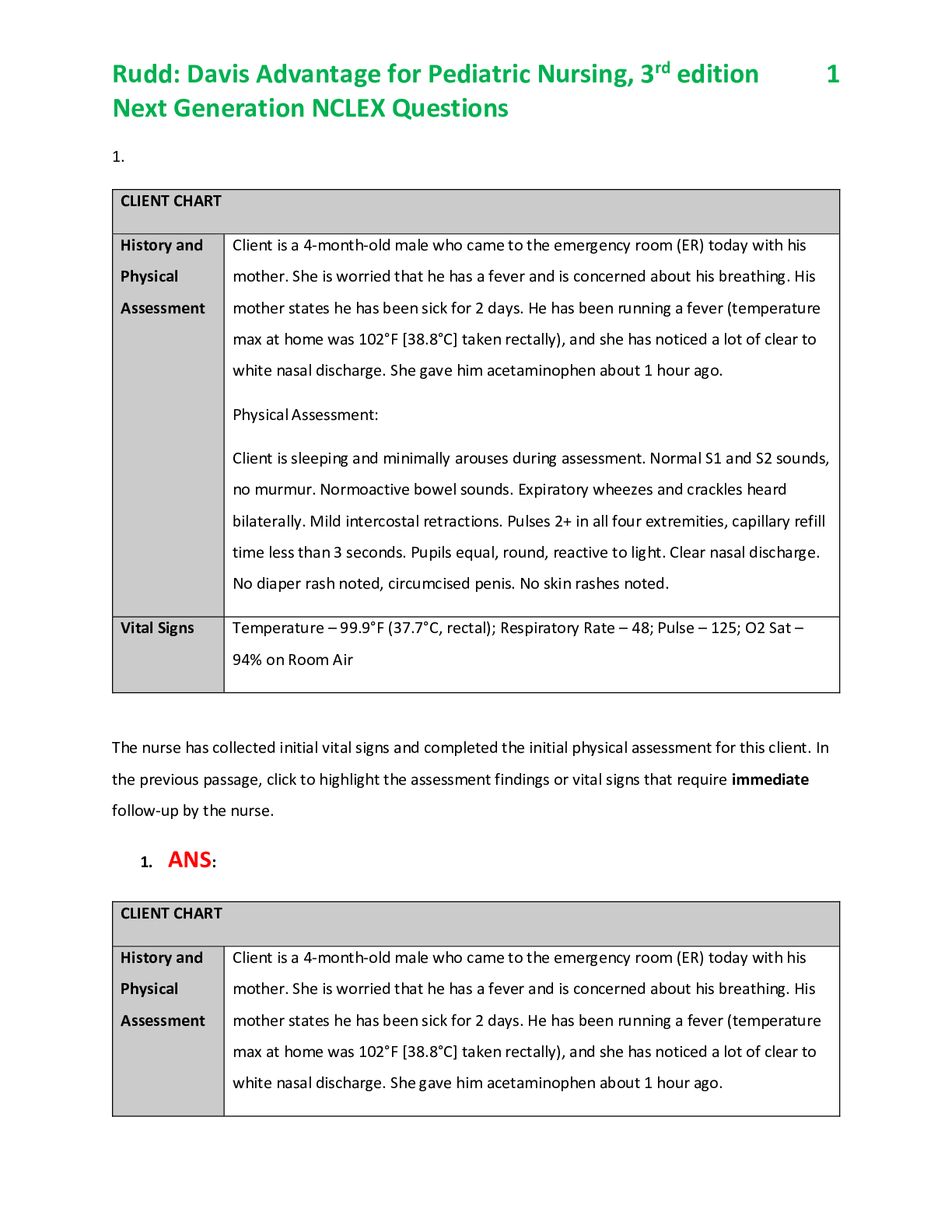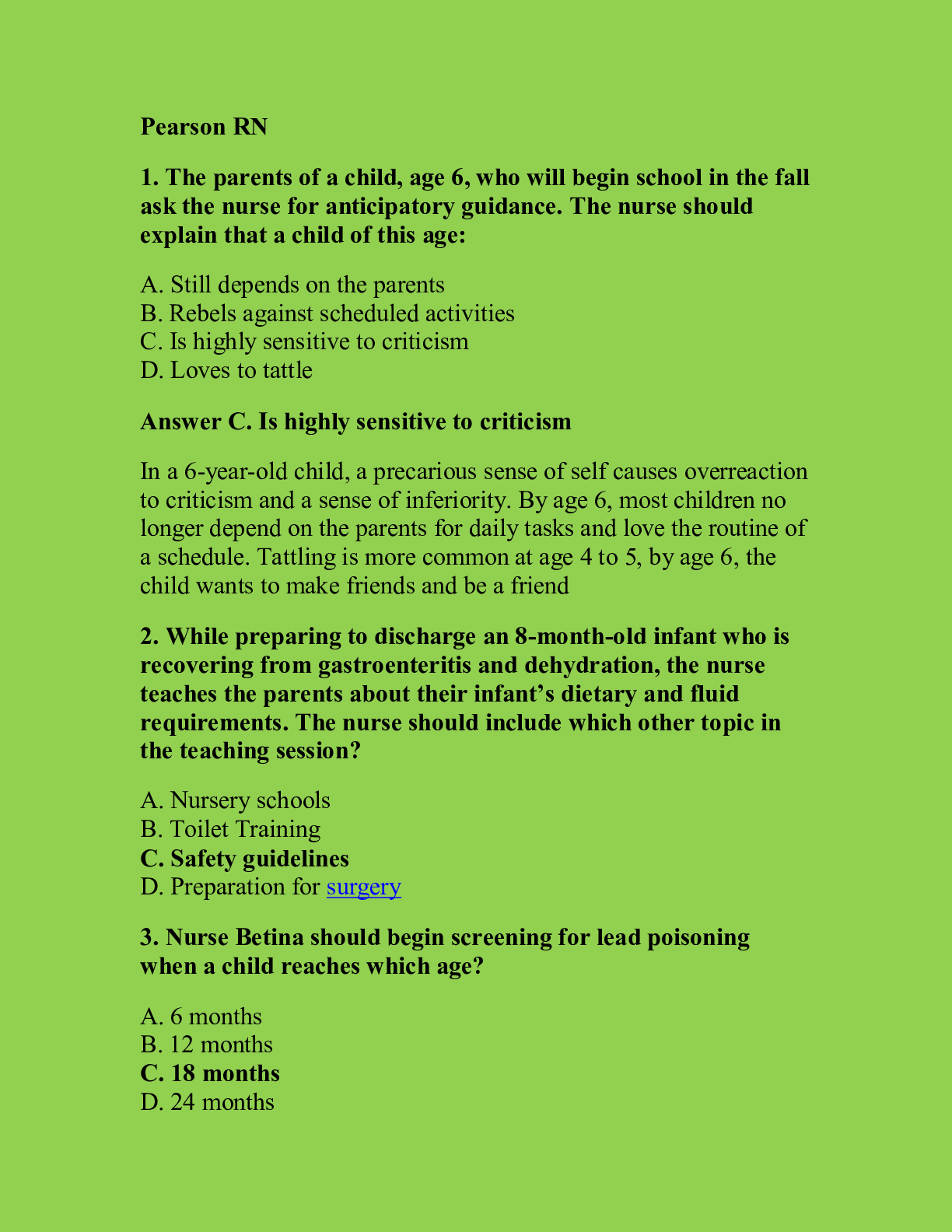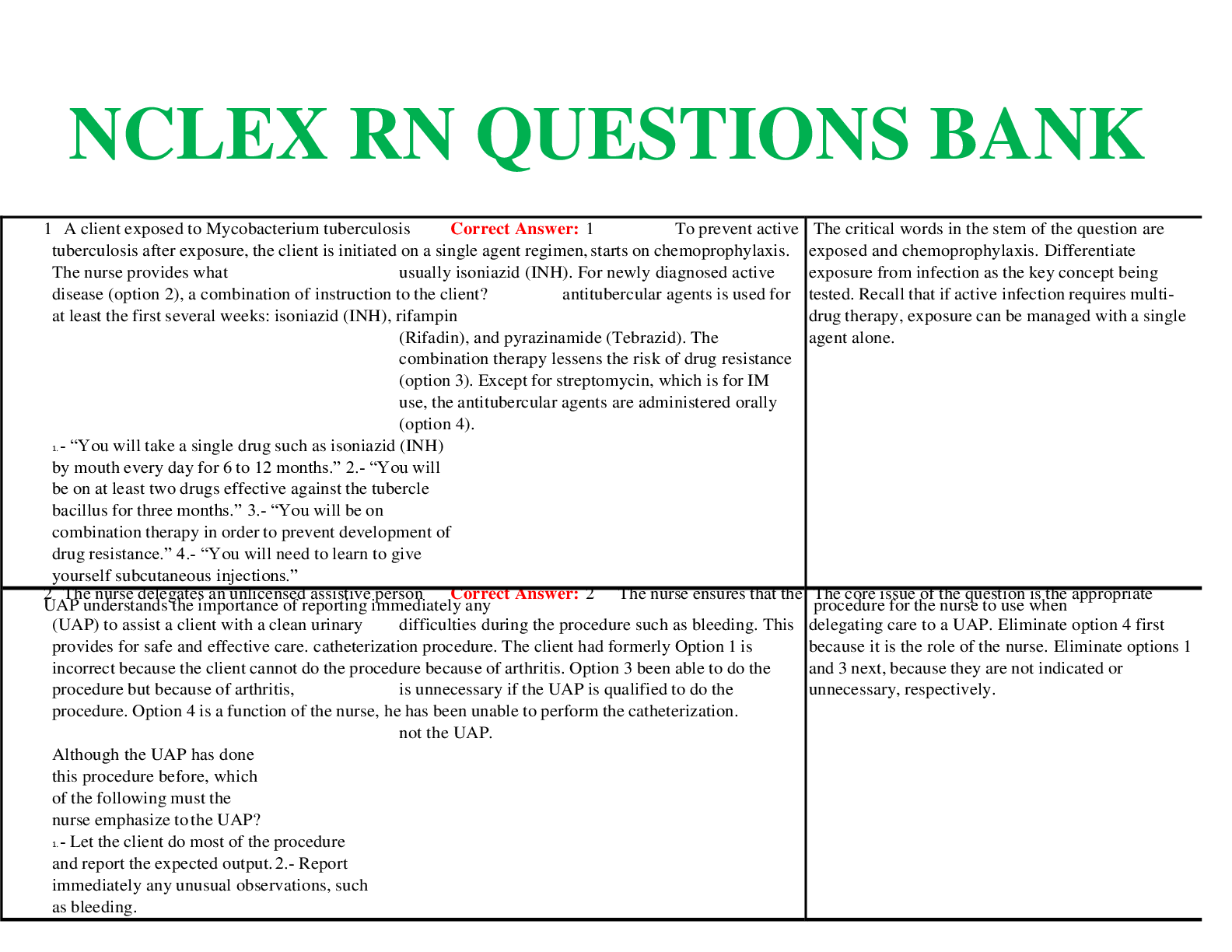Health Care > NCLEX > NCLEX Review Adult Health (25 Questions) 1/25/2022 with complete solutions (All)
NCLEX Review Adult Health (25 Questions) 1/25/2022 with complete solutions
Document Content and Description Below
For a client who has not voided in 6 hours after surgery, appropriate interventions include: - ANSWER Assisting teh client to ambulate to the bathroom because ambulation, normal body position, and pri... vacy promote spontaneous urination Encourage oral fluid intake to stimulate adequate urine production Performing intermittent urinary catheterization, which is perscribed if teh client has significant urine in the bladder assessed via bladder scan and is unable to void voluntarily. Indwelling urinary catheters increase the risk for UTI and should be avoided I possible Performing a bladder scan, which can be used noninvasevily to assess teh volume of urine in teh bladder Running the water in teh bathroom sink and pouring warm water over teh perineum, which can stimulate the urge to void spontaneously Urinary retention is common after surgical intervention, often caused by anesthesia, opiod medications, edema from lower abdominal/pelvic surgeries, and outlet obstruction - ANSWER Client teaching related to peptic ulcer disease (PUD) includes lifestyle changes (dietary modifications, stress reduction), PUD complications, and medication administration. H. Pylori infection and treatment with non steroidal anti-inflammatory drugs (NSAIDs) are risk factors for complicated PUD. H.Pylori treatment includes antibiotics and proton-pump inhibitors for acid suppression. The recommended initial treatment is 7-14 days of triple-drug therapy with omeprazole (Prilosec), amoxicillin, and clarithromycin (Biaxin) - ANSWER Clients with PUD should avoid NSAIDs [aspirin, ibuprofen (Motrin)] as they inhibit prostaglandin synthesis, increase gastric secretion, and reduce the integrity of teh mucosal barrier - ANSWER Clients with peptic ulcer disease should avoid NSAIDs, smoking, and excess use of alcohol or caffeine - ANSWER Clients with burns have increased metabolism and calorie requirements that must be met for healing to occur - ANSWER Consider Maslow's Hierarchy of Needs when prioritizing nursing concerns. Physiological needs should be met first (oxygen, fluids, nutrition). Proper nutrition is vital for healing to occur after a burn injury - ANSWER To prevent hip flexion contractures in clients with above-the-knee amputation, teh residual limb should not be elevated, especially after 24 hours. Instead, edema should be managed using a figure eight compression bandage. Teh bandage should be worn at all times until the residual limb is healed, and care should be taken not to wrap it too tightly. Hip flexion contractures can also be avoided by placing teh client in prone position with hip in extension for 30 minutes 3 or 4 times a day - ANSWER Bucks traction immobilizes hip and femur fractures. A boot or traction tape is applied to teh affected extremity and a perscribed weight pulls the limb into traction. The client is typically placed in supine position with teh foot of the bed raised to maintain counetrtraction - ANSWER After a new cast is placed, the nurse should elevate teh clients limb above teh heart for the first 48 hours to increase venous return and decrease edema in the affected extremity. However, the extremity should not be elevated if compartment syndrome develops - ANSWER stress-induced hyperglycemia causes complications in. the hospitalized client. To minimize complications, the recommended target glucose range for critically ill clients is 140-180 mg/dL. For non-critically ill clients <140 mg/dL fasting and < 180 random blood glucose are recommended - ANSWER The most common cause of acute pericarditis is a recent viral infection. It is an inflammation of teh visceral and/or parietal pericardium. Pericarditis is characterized by typical pleuritic chest pain that is sharp. It is aggravated during inspiration and coughing. - ANSWER Pain associated with acute pericarditis is usually relived by what? - ANSWER sitting up and leaning forward (this position reduces pressure on teh inflamed parietal pericardium, especially during lung inflation. The pain is different than that experienced during myocardial infarction) Assessment of acute pericarditis shows what? - ANSWER pericardial friction rub (scratchy or squeaking sound). What is the treatment plan for acute pericarditis? - ANSWER combination of non steroidal anti-inflammatory drugs (NSAIDs) or aspirin plus colchicine Pericarditis causes pain on _________ not ________. The pleuritic-type pain also increases with _________. - ANSWER inspiration ; expiration ; coughing The supine or lying-down position _________ pericarditis pain? - ANSWER worsens Any factor that increases oxygen demand or decreases oxygen supply to cardiac muscle may cause angina, including the following: - ANSWER physical exertion (exercise, sexual activity): increases heart rate and reduced diastole (time of maximum blood flow to the myocardium Intense emotion (anxiety, fear): initiates teh sympathetic nervous system and increases cardiac workload Temperature extremes: Usually cold exposure and hypothermia (vasoconstriction); occasionally hyperthermia (vasodilation and blood pooling) Tobacco use and second hand smoke inhalation: replaces oxygen with carbon monoxide; nicotine causes vasoconstriction and catecholamine release stimulants (cocaine and amphetamine): increases heart rate and causes vasoconstriction Coronary artery narrowing (atherosclerosis, coronary artery spasm): decreases blood flow to the myocardium Angina pectoris is chest pain caused by myocardial ischemia. Any factor that increases oxygen demand or decreases oxygen supply may deprive the myocardium of necessary oxygen needed to function effectively - ANSWER Proper care of teh stoma and such appliance that should be taught to the client or caregiver includes teh following: - ANSWER Ensure sufficient fluid intake (at least 3,000 mL/day unless contraindicated) to prevent dehydration; identify times to increase fluid requirements (hot weather, increased perspiration, diarrhea) Identify and eliminate foods that cause gas and odor (broccoli, cauliflower, dried beans, Brussel sprouts) Empty the pouch when it becomes one-third full to prevent leaks due to increasing pouch weight With a colostomy, the stool changes from liquid to more solid as it passes through the colon. Proper care of the ostomy and pushing device in clients with a colostomy includes ensuring sufficient fluid intake, preventing gas and odor, and changing teh pouch system when it becomes one-third full to prevent leaks - ANSWER Irrigation to promote a bowel regimen may be more useful for descending or sigmoid colostomies as teh stool is more formed - ANSWER Addisonian crisis is triggered by stress, and it's manifestations include the following: - ANSWER hypotension and tachycardia dehydration hyperkalemia and hyponatremia hypoglycemia fever weakness and confusion Addisons disease is adrenocortcol insufficiency or hypo function of teh adrenal cortex. A deficiency in all 3 classes of adrenal corticosteroids, include glucocorticoids, mineralcorrticoids, and androgens, is present in Addisons disease. - ANSWER Addisons crisis or acute adrenocortical insufficiency is a potentially life-threatening complication of Addisons disease - ANSWER What is addisosonian crisis triggered by? - ANSWER stress What can Addisons disease lead to? - ANSWER shock Clients experiencing diaherra lasting >48 hours or accompanied by fever or bloody stool should see their healthcare provider for assessment of fluid status, electrolyte levels, and identification of underlying causes - ANSWER Loperamide (Imodium) is a synthetic opiod used as an antidiarrheal. It slows peristalsis and subsequently increases fluid absorption. It should not be used more than 2 days or if fever is present as retention of bacteria or toxins inside teh colon can make teh process worse and cause toxic megacolon - ANSWER [Show More]
Last updated: 1 year ago
Preview 1 out of 4 pages
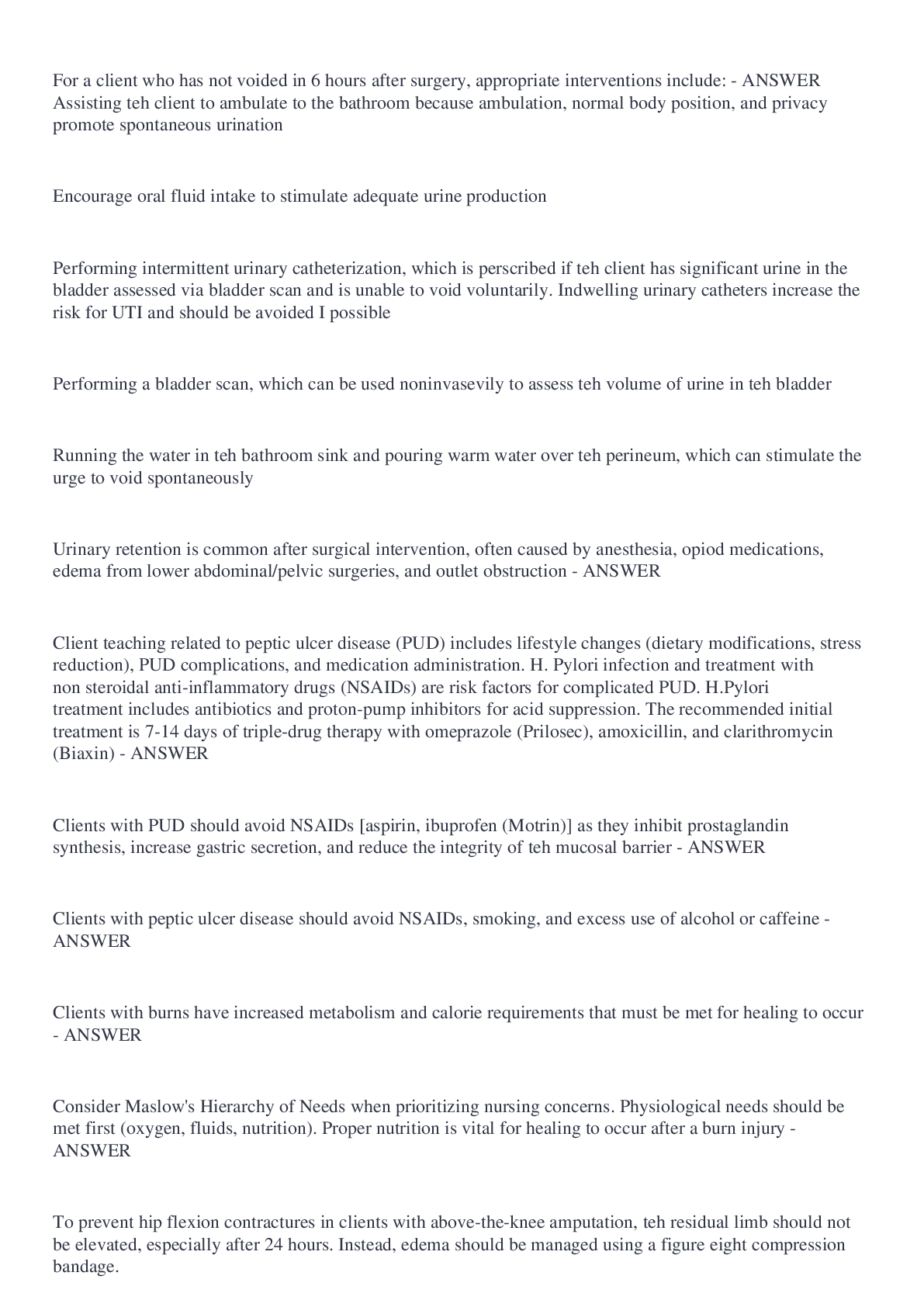
Reviews( 0 )
Document information
Connected school, study & course
About the document
Uploaded On
Jul 19, 2022
Number of pages
4
Written in
Additional information
This document has been written for:
Uploaded
Jul 19, 2022
Downloads
0
Views
33

